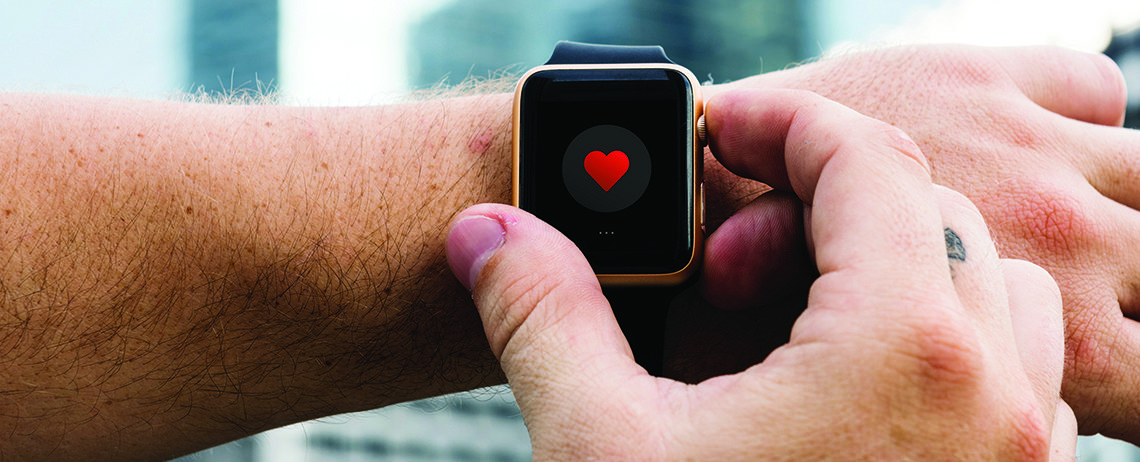Vital Signs: How Wearable Technology Helps Protect Your Workforce
SafetyCulture News | By | 18 Dec 2018 | 3 minute read

Hard hats and hi-vis are no longer the only armour available to workers to help tackle the factors that can bring about injuries. New developments in wearable sensors are helping to guard against joint strain, and injuries caused by issues such as fatigue or dehydration.
Think of it as the warning lights on a car alerting you that gas is running low, or that there’s a danger of the engine overheating. This new technology is working for a range of industries including mining, construction, and sports.
The University of Melbourne is currently working on the development of smart workwear that it says can be used across industries like mining, construction, factories, farming and the emergency services to provide real-time analysis—and instant warnings to both the employee and employer when they’re needed.
A report on the university’s Pursuit website outlined developments to date—and what it could hold in the future.
The technology, which operates through a wristband and motion sensors in kneepads, assesses levels of fatigue, dehydration and osteoarthritis. The wireless system leads back to a central command centre that runs real-time monitoring and alerts.
The benefits could be manifold, particularly with fatigue, where workers might have reached the stage where they can’t make a clear decision on their own safety levels.
It is being developed by two former University of Melbourne classmates, Dr Peng Hao and Dr Chien Chan. Dr Hao is now chief executive of BigLink Technology in China, which is running the project in a joint collaboration with the university as part of a development program the Victorian Government has with the Jiangsu province near Shanghai.
“For employees, the benefit is very straightforward—to prevent work-related injury and keep them healthy so that they can go back to their family everyday safely and continue working,” says Dr Chan.
“For industry and society, this could mean a significant increase in productivity of the industry and reduce the costs associated with work-related incidents due to deterioration in workers’ health conditions.”
It says it also has scope to be expanded out into monitoring aspects such as levels of oxygen and harmful gases—which could be of vital importance to industries such as mining.
In Australia, there are more than 100,000 workers comp claims annually, with 90 per cent due to injury and musculoskeletal disorders, according to the latest statistics from Safe Work Australia.
Labourers are the occupation most affected, covering about 25 per cent of claims. Body stressing has the largest share of incidents, accounting for nearly 40 per cent of incidents overall. Around 40 per cent of total claims relate to joint, ligament and muscle or tendon injuries.
In the US, the number of workplace injuries and illnesses reached 2.8 million in 2017, according to the Bureau of Labour Statistics. In Britain, the number of self-reported injuries at work amounts to about 550,000, reports the Health and Safety Executive.
Incidents across the three nations have been declining since the early 2000s—but there is obviously much work to be done to improve worker wellbeing and reduce the cost of loss of productivity and compensation.
Other Australian developments are in the mix, too, in influencing global wearable technology to help boost worker safety.
SmartCap Tech, which operates out of Queensland, is a baseball-style cap that tracks brainwaves to monitor alertness and guard against sleep, and has been used by drivers in the mining industry globally since the early 2010s.
Another Australian innovation has also emerged out of Victoria, under the name DorsaVi. Physiotherapist Andrew Ronchi was working with AFL teams Melbourne and St Kilda and, frustrated by the lack of clear data about the nature of injuries, came up with the idea of devices that could be attached to the bodies of those injured to provide movement data which would be analysed and that acted on.
It works by placing wireless sensors across the body to monitor movements including bending and stepping. Its products are now used across the global sporting world and corporations for health and safety purposes, and it’s been nominated for the Breakout Award in wearable tech website Wareable.com’s annual awards.
Academic research suggests that workers may still be cautious about using wearable technology due to concerns over privacy. “Twenty-three respondents explicitly used the term big brother when describing their apprehension,” the research reported, indicating there is are real concerns about how much information employers should have about their employees.
It’s still formative years for the use of sensors in matters of workplace safety and if employers and employees can work together to get the balance right, there’s a great deal of positive potential ahead.
Important Notice
The information contained in this article is general in nature and you should consider whether the information is appropriate to your specific needs. Legal and other matters referred to in this article are based on our interpretation of laws existing at the time and should not be relied on in place of professional advice. We are not responsible for the content of any site owned by a third party that may be linked to this article. SafetyCulture disclaims all liability (except for any liability which by law cannot be excluded) for any error, inaccuracy, or omission from the information contained in this article, any site linked to this article, and any loss or damage suffered by any person directly or indirectly through relying on this information.





